What is ABCDE assessment?
By Anoushka
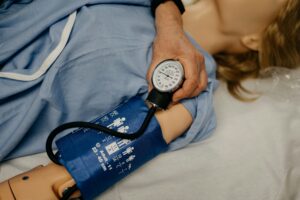
The ABCDE assessment is an algorithm used by doctors to identify and treat problems in patients who feel unwell. The five stages of the ABCDE assessment, named A, B, C, D, and E, are in order of decreasing urgency
Each stage requires three activities. Assessment involves directly interacting with a patient to check their vital functions – e.g. listening to their heartbeat or identifying a skin rash. Investigation involves ordering tests from the hospital – e.g. blood tests or X-ray images. Intervention involves treating a problem in a patient – e.g. helping to open their airway or giving antibiotics.
Each stage answers specific questions about important body functions, detailed below.
A – Airway:
Is there a clear route for air to travel from the patient’s nose or mouth to their lungs?
If not, remove visible airway obstructions (e.g. vomit or objects), reposition the patient’s head and neck using the ‘head-tilt-chin-lift’ or ‘jaw thrust’ manoeuvres, or insert a plastic tube called an ‘artificial airway’ through their nose or mouth.

B – Breathing:
Is the patient getting enough air into their lungs? Does their blood have enough oxygen?
If not, give the patient a facemask through which they can breathe oxygen or inhale medications called ‘bronchodilators’ which widen narrow airways within the lungs.
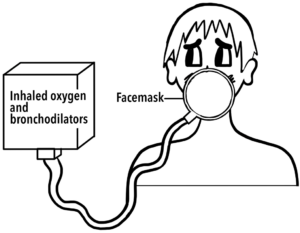
C – Circulation:
Is the patient’s heart pumping enough blood around their body? Are they dehydrated? Does their blood contain chemical imbalances or dangerous toxins?
Patients are given intravenous fluids if they are dehydrated. Chemicals within the fluids are adjusted to reverse chemical imbalances in their blood. Antidotes are given to any detected poisons or drug overdoses. Antibiotics are given if there is a severe bacterial infection. Medications or electric shocks can correct dangerous heart rhythms.
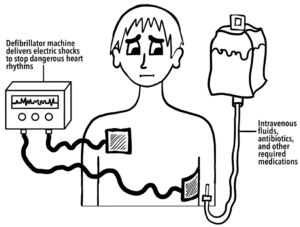
D – Disability:
Is the patient semi-conscious or confused? Have they lost control of parts of their body?
Altered consciousness and control requires further investigation using a CT brain scan to look for blood clots or bleeding, and a blood test for glucose because low blood glucose can make people feel and act very strangely, and cause brain cells death.
Bleeds and clots in the brain are respectively treated using surgery and medications that destroy blood clots. Intravenous glucose solution is given to patients with dangerously low blood glucose.
There are many more causes of altered consciousness (e.g seizures or brain tumours).
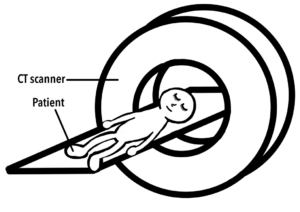
E – Exposure:
Does the patient have any pain or rashes? What else needs further investigation?
Look at every part of the patient’s body – there could be rashes, cuts, bruises, burns, bone deformities or damaged scars from previous surgeries. Feel and move each of their joints, checking for pain, swelling, fractures and restricted movement.
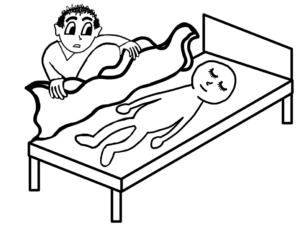
Who decides what the stages involve?
The specifics of the ABCDE assessment are debated and updated by various medical organisations all over the world – for example NICE (National Institute of Clinical Excellence) in the UK, or NHMRC (National Health and Medical Research Council) in Australia.
Nevertheless, logic underlying ABCDE assessment protocol is founded in human physiology. Human cells require oxygen for generating energy which is essential for their survival. A blocked airway (stage A) will almost definitely deprive a patient’s cells of oxygen faster than a broken foot (stage E).



